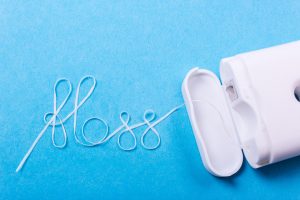You’ve probably heard it several times before, from your dentist and from TV commercials – flossing regularly is a must! Sadly, no matter how many times we get reminded, a lot of people still skip this important part.
The thing is – regular brushing is not enough because plaque can only be removed thoroughly through flossing. This ensures that the sticky material that gets in between teeth will be cleaned off, taking out the chance to cause damage to your teeth.
Neglected teeth will have an overgrowth of plaque and when this is not removed, it hardens and turns into tartar. When this happens, a dentist appointment is necessary because regular floss will not be able to remove tartar. You will need to have thorough cleaning or dental prophylaxis done to save teeth from beating eaten away by tartar. Further damage can lead to enamel loss and gum disease.
How to Properly Clean In Between Teeth
Thankfully, there are a great number of dental tools available to help you clean the spaces in between teeth. It might be easier to just pick on teeth with your fingernails or cutlery but this can just damage your teeth.
Make sure to use dentist-approved products like dental picks, water flossers and string floss.
Additionally, exercise precaution when flossing to avoid mishaps and accidents that can puncture your gums. Ask your dentist for the right kind of interdental cleaners that will work best for your set of teeth. If you are wearing braces or bridges, you might need to use special kinds of water flossers or dental pickers to make the process easier.
Flossing at the Right Time
Many people get confused about the right time to floss. Some people prefer to floss before brushing, while others prefer to do it after. Which one is right?
According to experts, both times are okay. The important thing is that you are doing it properly and regularly. It is ideal to find a specific time in the day that works best for your schedule. Flossing can take up a lot of time and this may make you want to skip the act and just sleep it off. Fight the laziness and commit 3-5 minutes to flossing, whether in the mornings or evenings.
If you haven’t been flossing regularly and are just getting back to it, you might draw blood during the first few tries. Don’t freak out! It is normal for gums to feel a little swollen and even bleed at first. However, if the pain becomes worse and bleeding persists for a long time, you might need to head over to the dentist for a check up.

